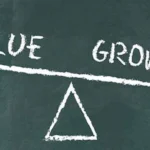Support and resistance levels are fundamental concepts in technical analysis, helping traders predict price movements and make informed trading decisions.
These levels represent critical price points where an asset tends to pause or reverse due to a concentration of buying or selling pressure.
Understanding how to identify key support and resistance levels is crucial for effective trading strategies in stocks, forex, and cryptocurrencies.
In this comprehensive guide, we will explore various methods for identifying support and resistance levels, their importance in trading, and practical applications for traders.
Additionally, we will discuss advanced strategies, real-world examples, and how to adapt to different market conditions.
What Are Support and Resistance Levels?
Support Levels
A support level is a price level at which an asset tends to stop declining due to increased demand.
It acts as a “floor” where buyers step in, preventing further price drops. When the price approaches this level, traders expect an upward reversal. If a support level is broken, it may turn into a resistance level.
Resistance Levels
Resistance levels, on the other hand, represent price points where selling pressure exceeds buying interest.
They act as a “ceiling” where the price struggles to move higher. When the price nears resistance, it is likely to reverse downward. If a resistance level is broken, it may become a new support level.
Why Support and Resistance Are Important
- Trade Entry and Exit Points: Identifying these levels helps traders decide when to buy or sell an asset.
- Risk Management: Traders use support and resistance levels to set stop-loss and take-profit orders.
- Trend Confirmation: These levels help in confirming trends and potential reversals.
- Technical Analysis Basis: Many other technical indicators rely on support and resistance levels for effective interpretation.
- Improved Decision-Making: Traders can better understand market sentiment and make data-driven decisions.
ALSO READ: How to Rebalance Your Stock Portfolio for Maximum Returns?
Methods to Identify Key Support and Resistance Levels
Historical Price Levels
One of the simplest ways to identify support and resistance is by analyzing past price movements.
Traders look at previous highs and lows, identifying levels where the price has historically reversed. The more frequently a price level has been tested, the stronger its significance.
Trend Lines
Trend lines are diagonal lines drawn along the price movements to determine support and resistance levels.
Uptrend lines connect successive higher lows (support), while downtrend lines connect lower highs (resistance). Well-drawn trend lines can serve as dynamic support or resistance levels.
Moving Averages
Moving averages smooth price data and help identify support and resistance levels. Common moving averages used include:
- 50-day SMA (Simple Moving Average): Medium-term trend indicator.
- 200-day SMA (Long-term trend indicator): Often used to determine overall market direction.
- Exponential Moving Average (EMA): Gives more weight to recent prices, making it more responsive to price changes.
Fibonacci Retracement Levels
Fibonacci retracement is a popular tool that identifies potential support and resistance levels based on key Fibonacci ratios (23.6%, 38.2%, 50%, 61.8%, and 78.6%). Traders use these levels to predict price reversals, especially in trending markets.
Pivot Points
Pivot points are calculated based on the previous day’s high, low, and closing prices. These levels help traders identify intraday support and resistance levels. The main pivot point acts as a key level, while support and resistance levels are derived from it.
Volume Profile
The volume profile displays trading volume at specific price levels, helping traders identify strong support and resistance zones where high buying or selling activity occurs.
High volume at certain price levels indicates areas where traders have shown significant interest in the past.
Round Numbers & Psychological Levels
Traders often consider round numbers (e.g., $100, $5000) as strong support or resistance levels because many traders place orders at these price points. Psychological levels play a crucial role in market behavior.
Breakouts and Retests
A breakout occurs when the price moves beyond a resistance or support level with significant volume.
Traders often wait for a retest of the level to confirm its strength before entering a trade. False breakouts can trap traders, so confirming a breakout with volume analysis is essential.
Market Structure & Price Action Analysis
Analyzing candlestick patterns, chart formations, and market structure helps traders identify key support and resistance levels.
Patterns like double tops/bottoms, head and shoulders, and flag formations can indicate potential reversals or breakouts.
ALSO READ: How to Build an Email List for Your Blog?
Summary of Key Support and Resistance Identification Methods
| Method | Description | Best Used For |
|---|---|---|
| Historical Price Levels | Identifies levels based on past highs/lows | General trading analysis |
| Trend Lines | Draws diagonal support/resistance levels | Trend confirmation |
| Moving Averages | Uses SMA and EMA to identify dynamic levels | Short- and long-term trading |
| Fibonacci Retracement | Applies Fibonacci ratios for reversals | Swing trading |
| Pivot Points | Calculates daily support/resistance | Intraday trading |
| Volume Profile | Highlights high-volume trading zones | Identifying strong S/R zones |
| Psychological Levels | Uses round numbers as key levels | Market psychology insights |
| Breakouts & Retests | Confirms new levels after a breakout | Trend continuation strategies |
| Market Structure | Uses chart patterns and price action | Advanced technical analysis |
How to Trade Using Support and Resistance Levels
Bounce Trading Strategy
Traders buy at support and sell at resistance, expecting price reversals at these levels. Stop-loss orders should be placed slightly beyond these levels to mitigate risk.
Breakout Trading Strategy
When price breaks above resistance, traders enter long positions. When price breaks below support, traders enter short positions. Volume confirmation is key to avoiding false breakouts.
Retest Confirmation Strategy
Traders wait for the price to break a key level and then retest it before entering a trade, ensuring confirmation.
Combining Indicators Strategy
Using multiple indicators alongside support and resistance (e.g., RSI, MACD) can improve accuracy in identifying trade opportunities.
Common Mistakes to Avoid
- Ignoring Volume: Low-volume breakouts often lead to false signals.
- Not Adjusting for Market Conditions: Support and resistance levels shift in volatile markets.
- Forgetting Stop Losses: Always set stop-loss orders to manage risk.
- Over-relying on a Single Method: Combining multiple approaches yields better results.
- Failing to Identify Fake Breakouts: Use confirmation signals to validate breakouts.
ALSO READ: How to Negotiate Business Deals Like a Pro?
Conclusion
Identifying key support and resistance levels is essential for making informed trading decisions.
By combining multiple methods—such as historical levels, trend lines, moving averages, Fibonacci retracements, and price action analysis—traders can enhance their accuracy in predicting price movements.
Effective use of these levels can improve risk management, trade execution, and overall profitability.
Mastering support and resistance analysis takes practice, but with dedication, traders can significantly improve their success rate in the financial markets.







